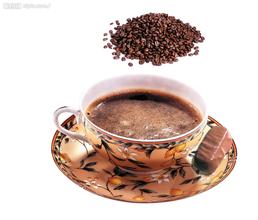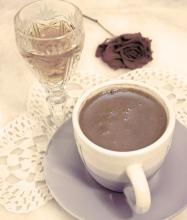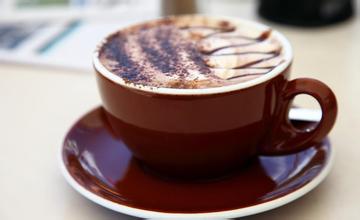Introduction to the flavor and taste characteristics of Nicaragua Los Congo Manor Coffee with moderate acidity and delicious aroma
In January 2012, a new government was formed in Nicaragua. The main members are: vice President Omar Ayers Levin Acevedo, Minister of the Interior Anna Isabel Rosales (female), Minister for Foreign Affairs Samuel Santos, Minister of Finance Alberto Guevara, Minister of Defense Rutt Esperanza Tapia (female), Minister of Development, Industry and Trade Orlando Solorzano, Minister of Agriculture, Animal Husbandry and Forestry Ariel Bucaldo, Minister of Transport and Infrastructure Pablo Fernandez Martinez, Minister of Health Sonia Castro Gonzalez (female), Minister of Labour Heanes Chavez (female), Minister of Environment and Natural Resources Juana Ahniar (female), Minister of Energy and Minerals Emilio Rabacholi, Minister of Family and Youth Marcia Ramirez Mercado (female), Minister of Education Miriam Lauders (female), Minister of Tourism Mario Salinas, Minister of Youth Bosco Castillo, Minister of Women Aaron Patricia Sandino National Liberation Front: the ruling party. Established on July 23, 1961, mainly composed of workers, farmers and intellectuals, it waged a long armed struggle to overthrow the military dictatorship of Somoza. He was in power from July 1979 to April 1990. He won the general election in November 2006 and returned to power after 16 years of loss of power. Won again in the general election in November 2011 and remained in power. General Secretary Daniel Ortega, the current president.
Independent Liberal Party: opposition party. Founded in 1944, it is mainly composed of members of the Liberal nationalist Party who are dissatisfied with the Somoza family. In November 2011, his candidate Gadya took part in the presidential election, ranking second with 31.13% of the vote. Chairman Educardo Montealegre.
Constitutional Liberal Party: opposition party. He took office for the first time in 1996. Won again in the general election in November 2001. Lost the general election in November 2006. The current chairman, Maria Ayd Osuna (female), General Secretary Miguel Rosales Ortega.
Nicaraguan Freedom Union: opposition party. Founded in 2006 by former Interior Minister Montealegre, it is mainly composed of members of the Constitutional Liberal Party who are dissatisfied with Alemann's alliance with SPLF. In November 2006, his candidate Montealegre took part in the presidential election, ranking second with 28% of the vote.
Sandino Reform Movement: opposition party, founded on 18 May 1995. It is mainly composed of some cadres, intellectuals and artists separated from the Sang Jiefang, and advocates the maintenance of social democracy, legal system, and fairness. Chairman Enrique Saenz
Nicaraguan coffee of high quality is in the forefront of coffee beans in the world and enjoys a good reputation. Its particles are moderate in size, mild in taste and very aromatic and mellow.
Nicaragua is located in central Central America, bordered by the Pacific Ocean to the west and the Caribbean Sea to the east. The highlands in the north and the coastal plains in the east are part of the Central American volcanic belt. The eastern plain is high-temperature and rainy, with a tropical maritime climate. The suitable climate provides an excellent growth environment for the cultivation of coffee.
High-quality Nicaraguan coffee, grown in the north and middle of the country. Coffee is a pillar industry in Nicaragua, producing nearly 100,000 tons of coffee beans every year. Many people who have tasted Nicaraguan coffee usually think that it is no different from Salvadoran coffee or Honduran coffee. It is full-bodied, smooth and delicate, with a slightly bitter finish, like a faint taste in a wine.
In many countries, coffee production will be seriously affected for political reasons. Nicaraguan coffee industry is no exception. The 1979 revolution forced coffee planters to flee to Miami. A period of indecision followed, when the government considered whether to redistribute land, including many plantations, which led to a shortage of coffee and a decline in production, from more than 1 million bags in the early 1970s to less than 600000 bags in 1990. Now the Government has opened up the coffee industry and private owners have taken control of the market. The best coffee is produced in Sinotega and Novo Segovia in Matagalpa. It has moderate acidity, delicious aroma and is very lovely.
Nicaragua is now one of the poorest countries in Central America. Due to its poor economic foundation, the coffee industry is still relatively backward, while coffee farmers are in extreme poverty. Fortunately, Nicaraguan coffee has received some foreign aid funds to improve the quality of its coffee. The coffee produced in Nicaragua's Madagelba, Sinodega and Segovia is highly respected by coffee lovers all over the world. In particular, the coffee produced in the Madaguelba region of Nicaragua is located in central Central America, facing both the Pacific and the Caribbean Sea. Has a beautiful tropical amorous feelings. Although it is one of the poorest countries in Central America, it produces coffee that is popular with coffee lovers.
The development of the coffee industry in Nicaragua is really not easy. Due to the influence of the civil war, coffee production decreased sharply for a time, but only showed an upward trend in recent years. Although coffee farmers are already living in poverty and the poor economic foundation makes the coffee industry relatively backward, the coffee produced in Madaguelba, Sinodega and Segovia is still highly respected by coffee lovers around the world (in particular, one of the coffee produced in Madagelba is said to be very similar to Kenya's AA). No matter where you come from, good coffee will always be appreciated.
How would you describe Nicaraguan coffee?
Many people who have tasted Nicaraguan coffee will think that this kind of coffee is no different from El Salvador or Honduras. In fact, each kind of coffee has its own characteristics, and each kind of coffee has its own points to pay attention to.

Important Notice :
前街咖啡 FrontStreet Coffee has moved to new addredd:
FrontStreet Coffee Address: 315,Donghua East Road,GuangZhou
Tel:020 38364473
- Prev

Introduction to the characteristics of coffee flavor and taste in Nicaragua Los Congo Manor
Since July 1927, Augusto. Cesar. Sandino led the people in a guerrilla war against the US occupation, forcing the US military to withdraw in 1933. On February 21, 1934, the Commander of the Nicaraguan National Guard, Anastacio. Somocha. Garcia assassinated Sandino at the behest of US President Roosevelt. He became president in 1936 and has been pro-American for more than 40 years since then.
- Next

Fragrant taste slightly sour El Mercedes Manor coffee flavor taste introduction
Savanna climate. The plain area belongs to the tropical rain forest climate and the mountain area belongs to the subtropical forest climate. The average annual temperature is 25-28 ℃. The annual precipitation is more than 1800 mm in mountain areas and about 1000 mm in coastal areas. The rainy season is from May to October. Don't underestimate El Salvador's coffee production. In its heyday, it was the world's fourth largest coffee producer, but decades of civil war almost dragged down coffee
Related
- Does Rose Summer choose Blue, Green or Red? Detailed explanation of Rose Summer Coffee plots and Classification in Panamanian Jade Manor
- What is the difference between the origin, producing area, processing plant, cooperative and manor of coffee beans?
- How fine does the espresso powder fit? how to grind the espresso?
- Sca coffee roasting degree color card coffee roasting degree 8 roasting color values what do you mean?
- The practice of lattes: how to make lattes at home
- Introduction to Indonesian Fine Coffee beans-- Java Coffee producing area of Indonesian Arabica Coffee
- How much will the flavor of light and medium roasted rose summer be expressed? What baking level is rose summer suitable for?
- Introduction to the characteristics of washing, sun-drying or wet-planing coffee commonly used in Mantenin, Indonesia
- Price characteristics of Arabica Coffee Bean Starbucks introduction to Manning Coffee Bean Taste producing area Variety Manor
- What is the authentic Yega flavor? What are the flavor characteristics of the really excellent Yejasuffi coffee beans?

